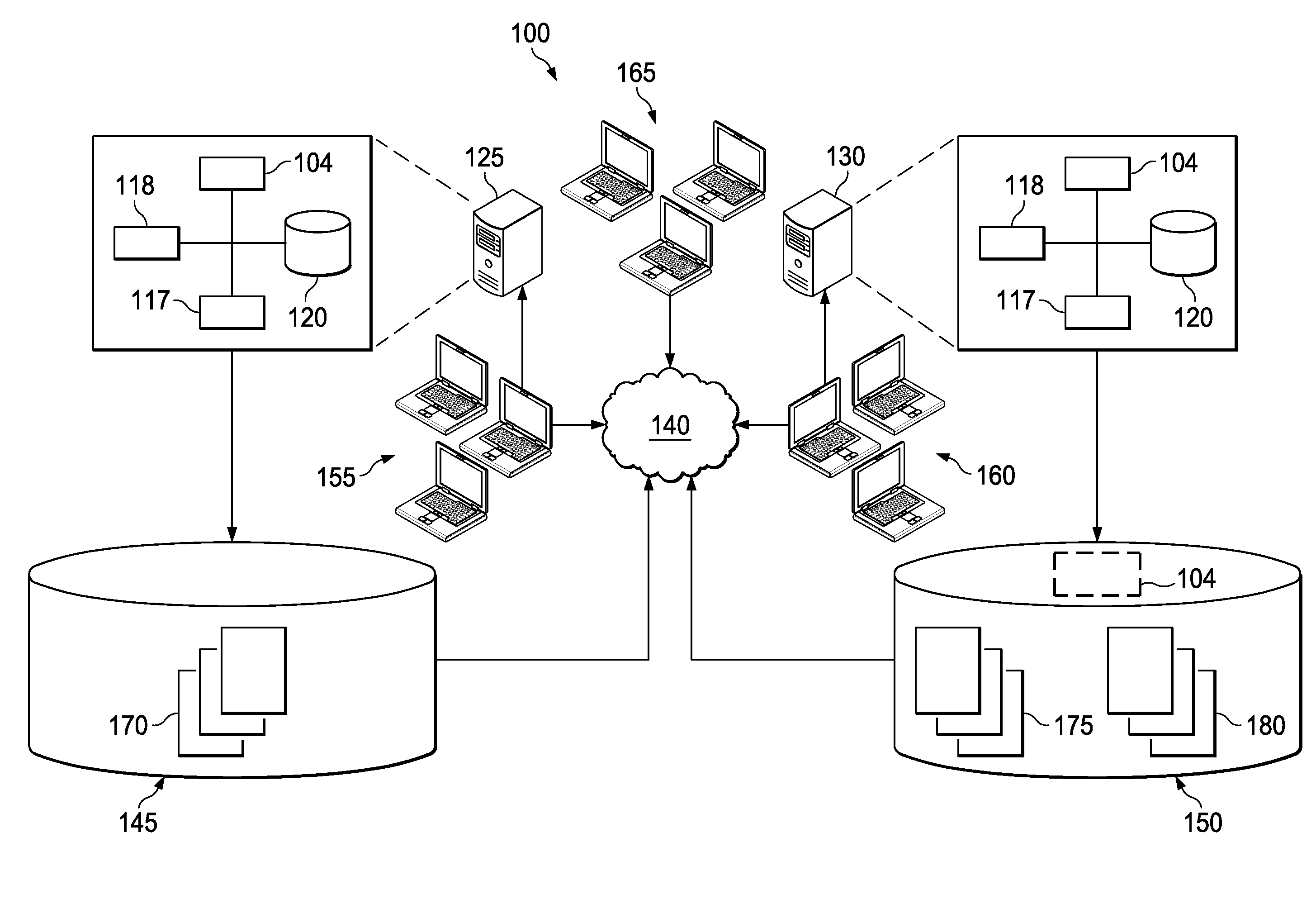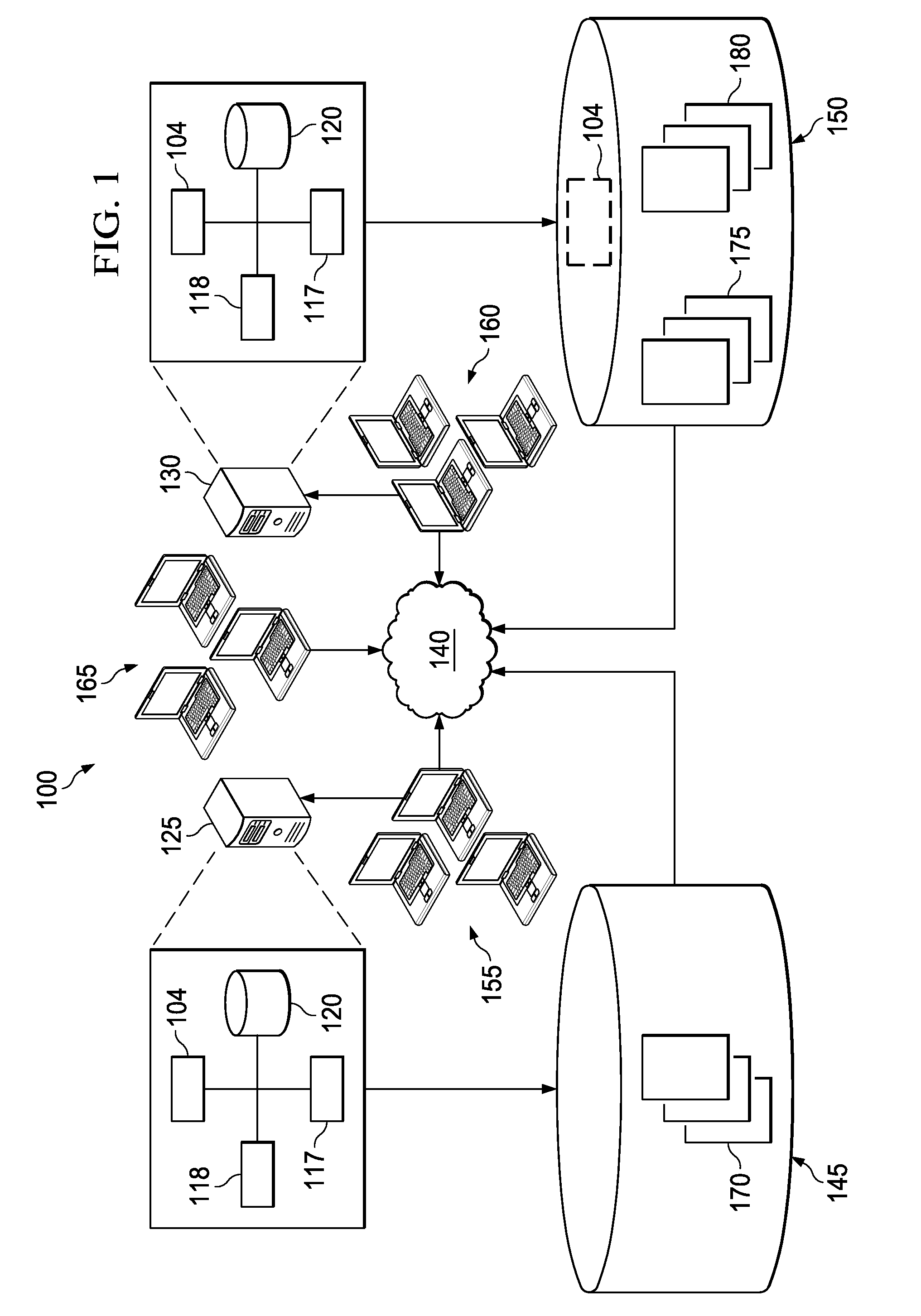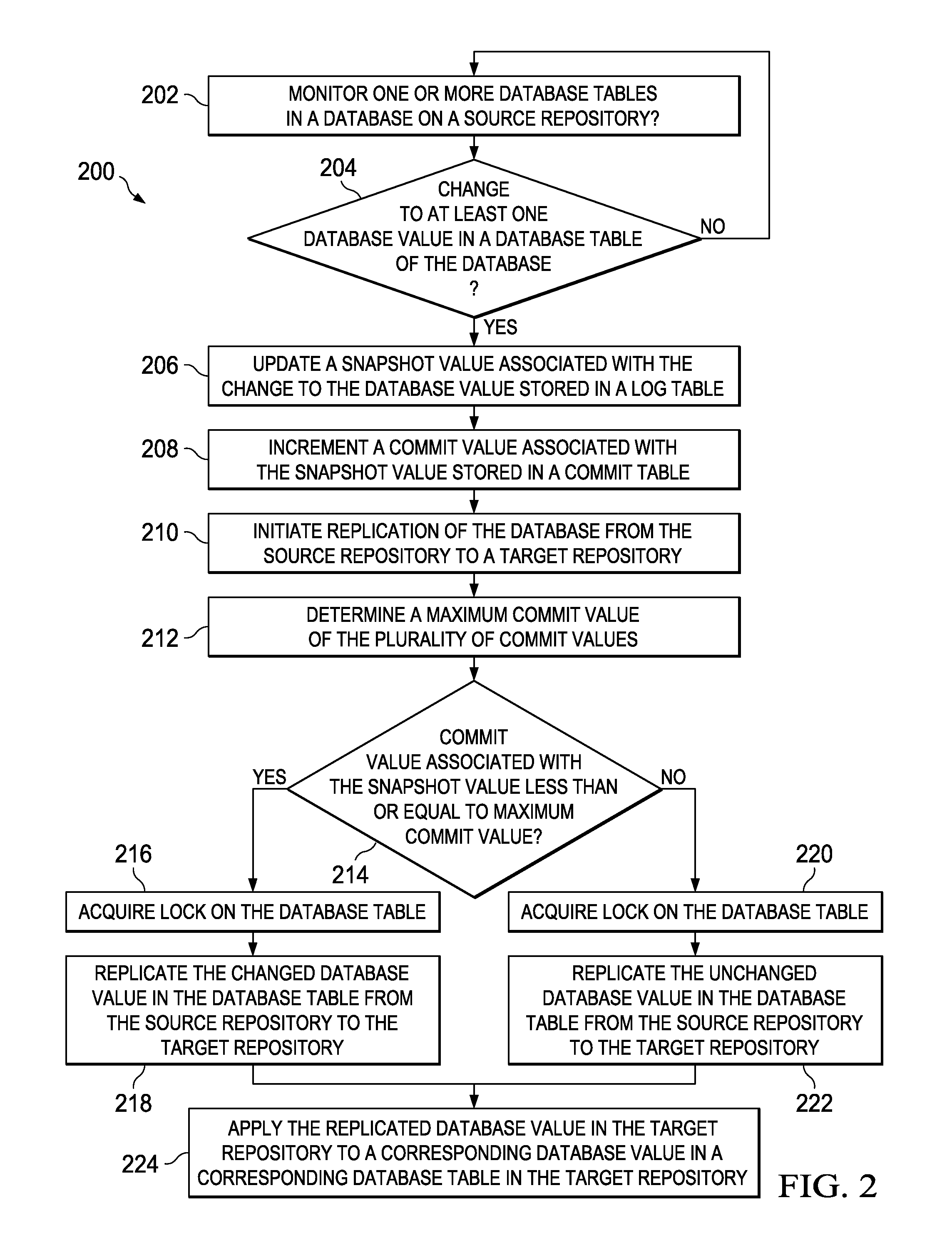Replicating data to a database
a database and data technology, applied in the field of replication data, can solve the problems of reducing throughput, affecting the consistency of data replication, and affecting the operation of data replication,
- Summary
- Abstract
- Description
- Claims
- Application Information
AI Technical Summary
Benefits of technology
Problems solved by technology
Method used
Image
Examples
Embodiment Construction
[0032]FIG. 1 illustrates an example distributed computing system 100 including a replication module 104 for replicating data from a source database 145 to a target database 150. As illustrated, the system 100 includes a source server 125, a target server 130, the source database 145, and the target database 150, along with one or more groups of client devices (155, 160, and 165) communicably coupled through a network 140. In alternative embodiments, however, one or more of these components may not be part of the distributed computing system 100 without departing from the scope of the present disclosure. For instance, in some embodiments, the target server 130 may not be included in the system 100, and logic (e.g., software, middleware, source code, executable instructions, data, and otherwise) illustrated as residing on the target server 130 may be located on, for example, the target database 150. For example, as illustrated, the replication module 104 may, in some embodiments, resi...
PUM
 Login to View More
Login to View More Abstract
Description
Claims
Application Information
 Login to View More
Login to View More - R&D
- Intellectual Property
- Life Sciences
- Materials
- Tech Scout
- Unparalleled Data Quality
- Higher Quality Content
- 60% Fewer Hallucinations
Browse by: Latest US Patents, China's latest patents, Technical Efficacy Thesaurus, Application Domain, Technology Topic, Popular Technical Reports.
© 2025 PatSnap. All rights reserved.Legal|Privacy policy|Modern Slavery Act Transparency Statement|Sitemap|About US| Contact US: help@patsnap.com



